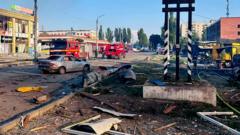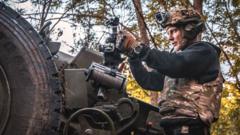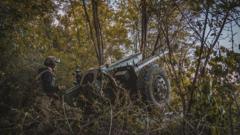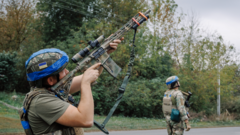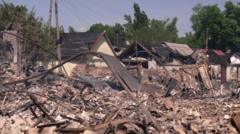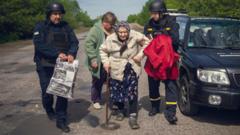Russia's summer offensive has reportedly made notable territorial gains in eastern Ukraine. Both Russian and Ukrainian forces are now employing motorcycles and civilian vehicles to enhance mobility on the battlefield, reflecting a new phase in warfare that accelerates the intensity of combat.
Russia's Summer Offensive in Ukraine: Tactical Shifts and Territorial Gains

Russia's Summer Offensive in Ukraine: Tactical Shifts and Territorial Gains
As Russia intensifies its military strategies in Ukraine, new tactics emerge with significant battlefield implications, highlighting the evolving nature of the conflict.
Russia’s ongoing summer offensive in Ukraine, which commenced in May, is marking its presence with significant territorial advances. Frequent clashes are reported, particularly near Kostyantynivka and in the northern Sumy region, as Russian forces adopt new tactics using agile units to penetrate Ukrainian defenses.
In stark contrast to previous months, where gradual advances were the norm, Russian troops have reportedly captured over 173 square miles in May alone, more than doubling their movements compared to April. This surge in activity, tracked by the Ukrainian organization DeepState, highlights a shift in the conflict’s dynamics.
A novel aspect of this offensive is the use of motorcycles and civilian cars to enhance mobility across open terrains. While Ukraine continues to rely heavily on drones for defense and resupply operations, Russia is effectively utilizing civilian vehicles in coordinated attacks. “It’s a modern twist on traditional cavalry tactics, now powered by internal combustion engines,” observed Col. Viktor Kevliuk, a Ukrainian Army reservist who analyzes military strategies at Ukraine’s Center for Defense Strategies.
In the Sumy region, Russian strategies have involved capturing small villages and employing tactical assault groups, often comprising just a handful of soldiers. These groups relentlessly test Ukrainian defensive positions, with each successive wave seeking to exploit any weakness. "These tactical maneuvers signify a new era of dynamic combat," Col. Kevliuk noted.
The evolving battlefield strategies of both Russian and Ukrainian forces reflect a fundamental change in the nature of their engagements, escalating the conflict and painting a poignant picture of modern warfare. As the summer months roll on, the implications of these tactics are likely to resonate deeply across the region.



